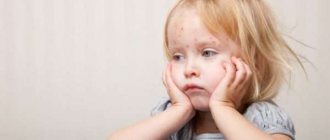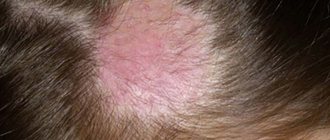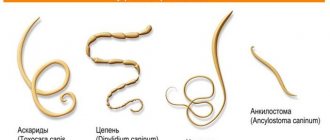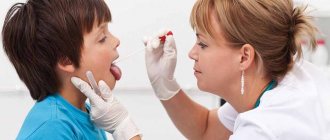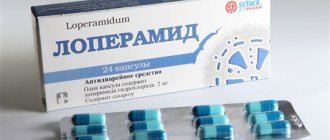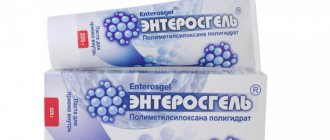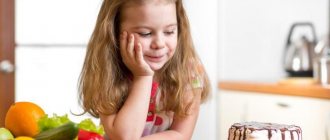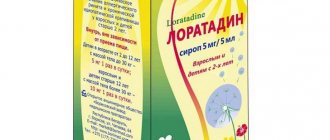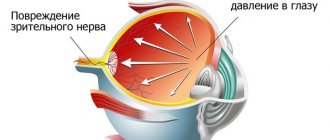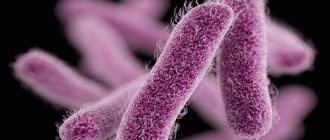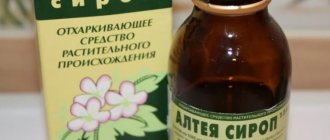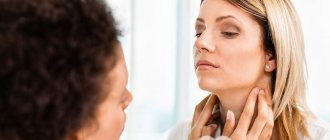Scoliosis in children is a common pathological process characterized by lateral curvature of the spine and changes in the shape of the vertebrae. This problem affects not only the appearance of the child, spoiling the posture; scoliosis entails a number of serious diseases of the back and internal organs. It is important to identify and begin treatment of the disease in time, since the spine can only be corrected in childhood.
Causes of scoliosis in children
Scoliosis can be either congenital or acquired under the influence of a number of external factors. The main causes of scoliosis in children:
- regular incorrect posture;
- weakness of the muscle corset in the back;
- the bone structure and muscular system are disproportionately developed, which leads to a bias towards one of the systems;
- inadequate physical activity;
- uneven load distribution;
- regularly placing weights in one hand;
- sitting position taken in an anatomically incorrect position;
- vegetative-vascular dystonia;
- deficiency of mineral and vitamin complexes in the body;
- various types of spinal injuries;
- sedentary lifestyle.
All of the above reasons, both individually and especially in combination, lead to the formation of scoliosis in children and adolescents.
Children with scoliosis experience not only physical discomfort, but also psychological discomfort, as they feel inferior and physically unattractive, especially when their health condition is already advanced. Therefore, it is so important not only to carry out the correct treatment, but also to find out the causes of scoliosis and eliminate the negative factors that led to the disease.
It is important to remember that preventing a disease is always much easier than treating it later and getting rid of the consequences. Therefore, preventing scoliosis in children, starting from preschool age, will help solve the problem of deteriorating posture and will not allow scoliosis and more complex health problems to develop. In addition, it will prepare the child’s body for future, more serious stress that awaits the child at school.
Risk factors
In addition to the main causes that cause this disease, there are also additional risk factors.
For example, an infant is most likely to develop scoliosis if both parents suffer from this disease.
In addition, it is boys who are most often susceptible to such changes in posture. Why exactly male representatives more often suffer from problems with the spinal column, doctors cannot answer - but this fact is a reality that exists and which has to be taken into account.
Also, parents of children who have various neurological disorders, rickets and rheumatism need to be especially attentive to the health of their child’s back. Such children have an additional factor for them to develop scoliosis.
Formation of the spinal column in childhood
If you look at the back of an adult, you can see that the spine has 4 physiological curves - two lordosis (forward bends) and two kyphosis (backward bends) - and resembles the letter S in a lateral projection, whereas when viewed from the back it will be straight. This curvature is absolutely normal if the bends do not exceed acceptable standards . It is thanks to them that a person is able to maintain balance while moving, and they also provide additional shock absorption to the body, preventing head shaking when walking.
Evolution of the child's spine
However, in newborn children the spine is absolutely straight. The formation of natural curves occurs during the growth and development of the baby. The formation of the “adult” curved spine begins at the age of about one year, when the child begins to take his first steps. And the process lasts for a long time, ending at approximately 12-14 years. Thus, the correct formation of posture largely depends not on the spine, but on how it and the muscle tissue surrounding it developed.
The appearance of spinal curves in children due to holding the head (a), when sitting (b) and standing (c)
Attention! With prolonged exposure to certain negative factors, the curves of the child’s spine are formed incorrectly - pathological curvatures of the spinal column appear. Because of them, a person in the future no longer has a straight back and beautiful posture - he is hunched over, his back “leads” to the side, his stomach can protrude, etc.
Parts of the human spine
Moreover, it is important to remember that the spine is not only an element of the musculoskeletal system, but also a container for the spinal cord, which controls the functioning of most of the body’s organs. Curvature of the spinal column will negatively affect not only a person’s appearance, but also his overall health. In people with a curved spine, the spinal cord may become compressed.
On a note! Children with curvatures of the spinal column are often more capricious, lethargic and get tired faster than children with straight and beautiful posture.
It is important to pay special attention to the formation of the child’s posture, since the older he is, the more difficult it will be to cope with curvatures if they arise for some reason.
Special attention should be paid to the child’s posture
Table. Causes of curvature.
| Cause | Characteristic |
| Rickets | This is a childhood disease, the development of which occurs due to a lack of calcium in the bone structures and due to a violation of material metabolism. In this case, the bones develop incorrectly. |
| Polio | This dangerous disease, fortunately, is now practically not common, since children are vaccinated against it. Poliomyelitis is caused by an infection of the spinal cord. It occurs without pronounced symptoms. As a rule, the result of the development of the disease is paralysis of the entire body. |
| Injuries | Some serious injuries can cause curvature. For example, leg bones that do not heal properly after a fracture can cause this disease. |
| Tuberculosis | This infectious disease affects bone tissue, but in general its causes are the same as those of pulmonary tuberculosis. Symptoms may not appear for a long time - sometimes several years pass from the moment of infection before a person discovers the first signs. Special treatment is required. |
| Physiological reasons | This category includes incorrect body position while preparing homework, a sleeping pillow that is too high, a soft mattress on the bed, as well as an incorrect and unbalanced diet. Carrying a heavy briefcase on your back or only on one shoulder also provokes the development of the problem. |
| Psychological reasons | Children who are depressed, as well as those who are embarrassed about something (for example, being tall) often begin to slouch. This is the child's attempt to become less noticeable. Unfortunately, sometimes this is enough to reward you with a curvature of the spine. |
On a note! Curvatures of the spinal column in a child can also develop against the background of obesity, hormonal imbalance, and are observed in children with cerebral palsy or in those who are not developed enough for their age. Underdevelopment of the back muscles easily leads to the appearance of pathological curves.
Most often, problems with posture are observed in schoolchildren who are forced to carry heavy bags to school and home every day, sit motionless for a long time, leaning over a desk while studying or doing homework.
Problems with posture are observed mainly in schoolchildren
Orthopedic chair for children
Symptoms of scoliosis depending on age
An attentive parent should watch his child. It is the timely recognition of the first symptoms that will help to effectively cope with the problem. The main symptoms of scoliosis include:
- The child's head is in a lowered position.
- Slouching appears in posture.
- The shoulders begin to come together - wing-shaped shoulder blades form.
- The top line of the shoulders is on the same horizontal line, that is, one shoulder is higher than the other.
All of the above symptoms are just beginning to signal the formation of the disease. When grade 2 scoliosis occurs in children, the following also appear:
- Deterioration of posture – strong changes in the spinal column and the location of the shoulder blades are visually observed.
- Discomfortable sensations in the back area.
- Headache.
- Irregular heart rhythm.
- Uneven breathing and even shortness of breath.
- Impairments of cognitive functions appear - deterioration of memory, attention, information perception, data processing.
Schoolchildren may experience frequent headaches, their psycho-emotional state sharply worsens - this is due to complexes caused by stooping. The same spectrum of symptoms also appears in adolescents. In addition, severe pain begins in the back area.
All symptoms begin to manifest themselves especially clearly with scoliosis of the 2nd degree.
In children under one year old
Moreover, it is worth noting that the youngest children show moodiness caused by headaches. There is a high probability of developmental delay. This is caused by poor circulation, including in the brain.
Scoliosis in infancy up to 3 years
Similar symptoms appear in children under 3 years of age. They may also exhibit instability in posture and gait if the disease is advanced.
Juvenile scoliosis from 3 to 10 years
Juvenile scoliosis begins with headaches. At first they are unstable and appear only periodically. Then they can increase and manifest as dizziness, even vomiting. And in especially severe cases, loss of consciousness may occur.
Juvenile scoliosis from 10 to 20 years
When a child reaches adolescence, the body experiences enormous stress. Hormonal changes occur, and muscle and bone structures actively grow. If at this time the formation of incorrect posture occurs, and later it develops into osteochondrosis, then young people begin to experience a complex of the following symptoms:
- persistent headaches - very often pain is found behind the eye socket;
- general malaise;
- state of chronic fatigue;
- disturbances in the functioning of internal organs, for example, the kidneys begin to work intermittently, the lungs are unable to fully supply the body with oxygen.
Very often, parents perceive a complex of symptoms as general malaise and fatigue from overload at school. This causes the initial stage to be skipped. And the disease manages to reach a serious stage. Therefore, in order to prevent the development of problems with the spine, it is necessary that the daily routine regularly include the prevention of scoliosis in school-age children. It’s even better when the body begins to prepare for future increased stress at the age when the child is a preschooler.
Symptoms
The most obvious external signs of scoliosis are:
- protruding shoulder blades;
- asymmetry of the shoulder blades and ribs;
- different shoulder levels;
- slouch;
- lameness;
- poorly developed back muscles (especially in children with a thin body constitution).
Symptoms of scoliosis are:
- pain at the point of greatest bending;
- fast fatiguability;
- dizziness;
- headache;
- tinnitus (sometimes).
Which doctor treats spinal curvature in children
As soon as the first signs of scoliosis are detected in children, it is necessary to consult a physician. It is important to remember that timely treatment of childhood scoliosis allows you to completely get rid of the symptoms of the disease.
Describe the full range of existing symptoms and your observations of the child. Most likely, the therapist, after conducting an initial examination and collecting anamnesis, will refer you for additional examinations. Depending on the severity of the disease, this may include a tomography, x-ray, or vascular ultrasound to determine whether there is a change in the velocity of the bloodstream.
It is possible that if there are significant changes in health, the GP will refer the child to an orthopedist. It is this attending physician who specializes in deformities of the osteoarticular apparatus.
If, in addition to changes in posture, there are a number of neurological signs, for example, deterioration of sensations in the skin or parts of the body, then you should also contact a neurologist.
If the disease is advanced and grade 4 scoliosis occurs, you will need to contact a surgeon. If a serious illness has been subjected to surgical intervention, then the help of a rehabilitation specialist will be required to help prevent further back deformities.
It is the correct diagnosis of scoliosis in children that helps to correctly diagnose, determine the stage and prescribe adequate treatment at the moment.
Pathogenesis (according to A. I. Kazmin)
Scoliosis develops according to the following three scenarios: subsequently, congenital or acquired diseases of the spine, weak paravertebral muscles, and disorders of the intervertebral discs. However, curvature of the spine of any type begins with epiphysiolysis of the intervertebral discs (destruction of the growth cartilage). This provokes a stop in the growth of the vertebrae in height, which in adulthood leads to their asymmetrical shape. Epiphysiolysis itself does not lead directly to scoliosis, but the associated displacement of the center of the nucleus pulposus (the nucleus is located inside each disc) in a specific direction deforms the vertebrae. In this case, the angle of curvature depends not on the stage of the disease, but on the degree of displacement of the nucleus. Decentralization of the core to the left or right determines the direction of curvature of the spine. The disorder then extends to the muscular system.
Often, the nucleus pulposus loses its elasticity when exposed to unfavorable factors (obesity, stress, poor nutrition, disease). Changes in the intervertebral disc affect adjacent vertebrae.
Regardless of the type of unfavorable factor, ultimately the vulnerable vertebrae, when subjected to stress, begin to shift and fix a certain position, which is how spinal deformity occurs.
Doctors say that stunting children's growth stops the progression of the disease. This is true, the process slows down significantly, but does not stop completely. Further curvature increases due to the natural processes of aging of the body, for example osteochondrosis.
Scoliosis and related diseases
It is important to remember that scoliosis is a progressive disease. If you treat it without due attention, the situation will quickly deteriorate as a result. Scoliosis of the 1st degree in children passes into the second and third stages, causing the occurrence of concomitant diseases.
The main ones include:
- visual impairments such as astigmatism, amblyopia, myopia, which are caused by insufficient oxygen supply to the brain;
- kidney failure caused by poor posture in the upper body;
- vegetative-vascular dystonia due to insufficient lung function;
- malfunctions in the functioning of the cardiovascular system also occur, which can lead to the development of quite serious diseases, such as myocardial hypertrophy;
- osteochondrosis;
- deterioration of the immune system;
- dysbacteriosis;
- ENT diseases - rhinitis, otitis and sinusitis, also caused by oxygen deficiency.
That is why treatment of scoliosis in children must be carried out in a timely manner. It is also important to understand that correcting scoliosis in children will require an integrated approach and a fairly long period of time. But before you begin healing, it is necessary to correctly determine the causes and select treatment in accordance with the factors causing the disease.
What not to do?
Those who have been diagnosed with scoliosis should avoid prolonged fixed body positions. The position should be changed every twenty minutes, especially if you feel discomfort.
Avoid carrying bags and packages in one hand. It is better to give preference to a backpack, or try to evenly distribute the load into two bags so that you can carry them in both hands.
When engaging in physical education and sports, the following are prohibited:
- Power training. Contribute to increased stress on the spine.
- Acrobatics. Most of the exercises are sharp and asymmetrical.
- Jumping, running, somersaults.
- Football basketball. There is a lot of jumping going on during games. This negatively affects the condition of the intervertebral discs. There is a high risk of injury.
For scoliosis of the 1st degree, tennis is allowed. But in the second stage you can only play table tennis.
What to do if your child has scoliosis
Scoliosis in childhood is currently one of the most common health problems. It is caused by numerous reasons that push the development of the disease. When parents heard the doctor’s disappointing diagnosis of scoliosis, it is necessary to urgently take measures to correct and improve the situation.
The specificity of the disease is that treating scoliosis in children at home is quite feasible. The main thing is that parents follow all the doctor’s recommendations and show persistence and perseverance in the fight against the disease.
After contacting a specialist and clarifying the diagnosis, most likely, depending on the severity of the disease, the doctor will prescribe the following techniques and methods of treatment:
- Massage for back scoliosis in children.
- Gymnastics for scoliosis.
As a rule, these measures are used in the early stages. But it is very important, under no circumstances, to prescribe treatment on your own, as soon as the doctor can tell you what to do if the child has scoliosis. After all, the set of measures depends on the severity of the disease and the presence of concomitant diseases.
How to cure the disease at home
First-degree scoliosis can be treated and its symptoms can be eliminated using traditional medicine methods, which are used for external observation. The most popular recipes that need to be made at home are:
- You need to take purified turpentine and knead it into a stiff dough made from rye flour. After this, you need to roll out the dough into a layer and apply it to the spine at the point of curvature. To keep it well, you need to secure the dough with a bandage and leave it until the morning.
- You need to take 100 g of indoor aloe leaves, chop them and mix them with half a glass of vodka and 100 g of honey. After this, you can make a compress, for which you need to take natural cotton cloth and soak it with a freshly prepared mixture. Then the compress cloth must be applied to the spine and secured with plastic film, on top of which lies an insulating bandage. The compress must be left until the morning.
- Horseradish root and two raw potatoes must be thoroughly washed with running water, and then crushed to a paste. Then you need to mix everything thoroughly and distribute the resulting mass over the compress tissue. After this, you need to place the compress on your back, and on top of it - a warming bandage. Keep the compress until you feel a strong burning sensation.
These treatment methods should only be used after prior consultation with a doctor.
Treatment methods for curvatures
At the moment, there are the following treatment methods that are available at different stages of the disease:
- medicinal;
- massage;
- therapeutic exercises – exercise therapy;
- massage;
- swimming;
- hippotherapy;
- kinesio taping;
- manual therapy;
- osteopathy.
Exercise therapy for scoliosis in children is one of the most effective methods of combating the disease. But it is important that this set of therapeutic exercises be prescribed by a specialist doctor based on the diagnosis.
The main tasks that therapeutic gymnastics solves for children:
- reduces the intensity of the load on the spinal column and allows it to be evenly distributed throughout the body;
- strengthens the muscle corset, which over time begins to independently support the spine in the correct position;
- strengthens ligaments;
- allows you to improve your posture;
- accelerates blood and lymph circulation in the body, thereby enhancing the nutrition of all internal organs and preventing them from suffering from oxygen deficiency;
- the progression of the disease stops;
- general health improves.
This is not all that exercise therapy can do for scoliosis in children. By performing exercises to prevent scoliosis in children, you don’t have to worry about deterioration in posture, and even more so, scoliosis won’t develop.
Therapeutic exercise and gymnastics
Exercises for scoliosis in children must be performed regularly, otherwise there will be no visible and expected effect. The difficulty may also lie in the fact that young children may approach the set of activities irresponsibly. This will reduce the quality of the gymnastics performed, so parents will need to either do exercises together with the baby, or carefully monitor the quality of each movement. It is better if the exercises performed are presented in a playful way.
Exercise therapy is most effective for grade 1 scoliosis in children. At this stage, it is easy to correct all existing deficiencies with posture and stop the development of the disease.
There are conditions for conducting classes. Before you begin therapeutic exercises at home, you should thoroughly ventilate the room. Wear comfortable clothes for the child that will not hinder movement. The total time for performing exercise therapy for children under the age of 6–7 years should not exceed 15 minutes. To make it more interesting for your baby, you should turn on the music, so he will be more active.
For children aged 7 years and older, the total time of physical activity can be increased to 20–30 minutes.
It is important that at any age only the recommended set of exercises for children is used both when correcting posture and when treating scoliosis.
Contraindications to exercise therapy in children with scoliosis
Despite the fact that exercises for grade 1 scoliosis can quickly cope with the disease, there are cases when performing them is strictly not recommended or it is necessary to delay this moment. That is, there are certain contraindications, both permanent and temporary. The main ones include:
- Any inflammatory processes in the body, occurring in both acute and chronic forms.
- The state of the body when there is an exacerbation of any chronic disease in a child.
- Scoliosis develops at a very fast pace.
- Increased body temperature caused by respiratory problems or other types of illnesses.
- Severe headaches of a migraine nature are a temporary contraindication for exercise therapy; you can return to them as soon as the pain is relieved.
- Existing diseases of the cardiovascular system and pathologies of the development of the heart and blood vessels.
- Severe back pain.
- Grades 3 and 4 scoliosis require careful consultation with a medical specialist - exercises in this case can only be done with the permission of a doctor.
Despite the fact that parents may think that the child is ready to perform a set of exercises for scoliosis, they should still consult a doctor. This is due to the fact that many diseases are hidden and cannot be determined independently. Parents may believe that the child has no contraindications, although in fact, he may actually have medical exemptions from performing the exercises. Therefore, it is the specialist doctor who will be able to choose the right exercises for children with scoliosis.
Is it possible to do exercises in the 3rd and 4th stages of scoliosis in a child?
Exercises for scoliosis in children, during stages 3 and 4 of the disease, are usually not performed. Since sudden movements are contraindicated at this stage. They can only aggravate the situation and lead to even greater trauma to already damaged vertebrae.
Massotherapy
In addition to physical therapy, massage is also used for scoliosis in children. It is also a fairly effective remedy for fighting scoliosis and other diseases of the musculoskeletal system.
The main tasks that massage solves:
- accelerates blood circulation, which helps relieve the inflammatory process in muscle tissue;
- by increasing oxygen supply to bone and cartilage structures, metabolism is accelerated, which helps reduce the rate of their degeneration;
- the inflammatory process is eliminated;
- the muscle corset is strengthened, which helps maintain the spinal column in the correct position;
- improved posture;
- strengthening the overall health of the body.
Children's massage for scoliosis can be performed both on the entire surface of the back and on a separate area that requires special attention and elaboration. The effectiveness of this treatment method lies in the fact that massage can be used up to 6 years, or rather, starting from infancy. Of course, the massage should be performed by a specialist. He is the one who knows how to properly influence certain areas in order to achieve the expected effect.
Massage therapists use the following techniques:
- stroking;
- trituration;
- squeezing;
- twisting;
- kneading;
- pat;
- vibrations.
But if it is not possible to visit a specialist regularly, then you can undergo massage training.
Thus, it will be possible to perform a massage course for your child with a certain sequence. To make it easier to understand the techniques and practice massage techniques for grade 1 scoliosis, you can use the video below.
And one more video.
Physiotherapy
When diagnosing scoliosis, the doctor can give the following clinical recommendations for performing physical procedures:
Taking a course of electrophoresis with medications that help dilate blood vessels to improve blood circulation in the affected organs and tissues.
- Ultrasound treatment of affected areas.
- Mud therapy.
- Magnetotherapy.
- Laser therapy.
- Therapy using UVT technology.
- Charcot's method.
- Perform massage movements at home as a strengthening procedure.
Each type of physiotherapy has a positive effect on scoliosis.
Correction with posture correctors
In addition to massage, physical therapy and various physical procedures, it is possible to use posture correctors. They gradually bring the curved area into a more correct anatomical position.
Posture correctors can be used at different stages of the disease. Depending on the severity of the curvature, these can be either elastic corsets or rigid structures, which are used for severe types of curvature. The main task performed by posture correctors is to prevent further curvature of the back. They allow you to gradually fix the correct position and make it natural.
Kinesio taping in the early stages
Kinesio taping for scoliosis in children is another effective way to get rid of this type of disease.
This is due to the specificity of the procedure itself. Tapes or kinesio tapes are special hypoallergenic patches that are glued to certain areas of the back.
This gluing is performed in order to:
- Eliminate muscle strain.
- Move them to the correct position.
- Relieve excess muscle tension.
- Tone overly relaxed muscles.
- Provide proper support to the spinal column.
Taping for scoliosis in children has the following advantages:
- the patch is breathable, which allows the skin to breathe freely under clothing;
- they are not visible, unlike corsets that are worn, so they can be used 24 hours a day under any conditions;
- the price category in which kinesio tapes are located is insignificant, and therefore will not require additional financial costs;
- effective when applied over the next 24 hours;
- provide correct fixation of the muscles, but at the same time, do not limit the child’s movement.
Despite the fact that taping is a very effective procedure, it still has its contraindications:
- Do not apply the patch to the skin if it is injured or irritated.
- If the child suffers from thromboembolism.
- If the child has systemic disorders of the skin.
- If you have cancer of any kind.
- Individual intolerance to the materials from which kinesio tape is made.
It is important for parents to monitor their child. If the tapes are applied correctly, they should not cause an intense feeling of discomfort in the child. Also, after the patches are applied, clothes must be put on very carefully so that the patch does not start to come off.
Using this type of patch, you can restore muscle function in scoliosis. This is very important, as it allows you to keep your back, or rather the spinal column, in the correct position and maintain your posture in this form.
Operational correction methods
It is important to remember that every effort should be made to avoid spine surgery for scoliosis.
Therefore, parents should pay a lot of attention to their children, looking closely at all the minor changes in the body. Even if at first glance they seem insignificant, as a result they can lead to chronic changes and pathological deformations. And this will not only worsen the health condition, but can lead to complete disability of the child.
Surgical intervention is performed only if scoliosis has progressed to the third or fourth stage. Before this, they try to apply and effectively influence the disease with all available conservative methods.
At the moment, the following technologies can be used in spine surgery:
If the curvature of the spine is very pronounced, the surgeon may suggest installing a metal structure in the form of pins to eliminate the defects. Such pins can be made either fixed or movable.
Fixed pins are cheaper and are installed mainly in adults, while movable pin structures are used specifically for children whose spine is still growing and changing.
Movable pin structures allow the spine to grow, as they themselves extend in height, adapting to the growing body. pin structures can be installed using the following methods - Harington, Cotrel-Dubousset, Lucke, Zielke.
It is the surgeon who selects the appropriate technique, in accordance with the health status of the little patient.
But before surgical intervention is performed, the spinal column requires a long period of preparation, which usually takes from 2 to 3 months. During this period, the patient is examined and the areas of the spine that are most affected by the disease are determined.
After the operation there is also a long recovery period. It is advisable that the little patient be observed by a rehabilitation specialist, who will not only allow the back to quickly recover after such a difficult surgical intervention. But also to prevent further changes in posture for the worse.
Hippotherapy
Children with scoliosis can only play sports if they choose certain permitted types of physical activity. One of these types is horse riding, but exclusively for medicinal purposes. Riding a horse for a child with scoliosis under the supervision of a specially trained instructor can have the following positive effects:
- The muscles are symmetrically tensed and, accordingly, strengthened evenly, which allows the back to align.
- Internal organs experience a kind of self-massage, especially those located in the pelvic area. Namely, they suffer the most from scoliosis in a child.
- Limited movements of the spine in the shoulder and pelvic girdle disappear.
- All muscle groups are evenly and balanced involved in the reproduction of movements.
Clinical picture
Most often, idiopathic scoliosis is diagnosed at 6-7 years of age. It is at this time that the first growth spurt is observed. Pathology is detected during a preventive examination. This can be done by an orthopedist or pediatrician. Symptoms of the disease depend on the severity of the curvature:
- First degree pathology can be diagnosed by drooping of the head and pelvic obliquity. Shrugged shoulders are also present. In such children, there is a stoop, the shoulder girdle and waist become asymmetrical. It is also possible to identify the emerging rotation of the vertebrae. The arc of deformation can be identified by bending forward. When the child straightens his body, it disappears.
- The disease of the second degree, in addition to the indicated manifestations, is accompanied by abnormal rotation of the vertebrae. There is also a muscle roll in the lumbar region and bulging in the chest area. These disturbances are observed in the deformation region. The curvature of the spine is preserved in different positions of the body.
- Scoliosis of the third degree is characterized by a strong rotation of the vertebrae. At this stage, a noticeable rib hump appears, and the abdominal muscle tissue weakens. Contractures also occur in the muscles and the rib cages protrude.
- With the development of fourth-degree scoliosis, the spine is seriously deformed and the paravertebral muscles are stretched. At this stage, the costal hump is clearly visible. The muscles and ribs in the concave area are sunken.
The appearance of abnormal processes in scoliosis provokes the occurrence of significant deformation of the chest, which is characterized by compression and displacement of the heart and lungs. There is also a risk of damage to the vascular bundle. This disorder is called scoliotic disease.
Pathology of the first and second degrees is usually not accompanied by any complaints. If there is a violation of the third and fourth degrees, there is a risk of pain in the back, high fatigue, and shortness of breath. There is also a decrease in motor activity, heart pain and tachycardia appear.
If there is no timely and adequate therapy, there is a possibility of vegetative-vascular dystonia, cholecystitis, biliary dyskinesia and other anomalies.
Girls who have scoliosis have a high risk of menstrual irregularities. Subsequently, this is fraught with problems during labor and poses a threat of miscarriage.
Scoliosis is often combined with other lesions of the musculoskeletal system. These include hip dysplasia and flat feet.
Kyphosis may also be observed. This term refers to the curvature of the spine that occurs in the sagittal plane.
Consequences
It is important to remember that scoliosis is not just an aesthetically unattractive back that becomes stooped. This disease entails changes in all internal organs and systems.
Therefore, if a child is not given proper attention from his parents, he runs the risk that his painful condition will develop into a serious illness. Moreover, all internal organs will suffer, leading to their pathological development. This way, the child’s nervous system will gradually begin to deteriorate, leading to many negative consequences. In addition, changes will occur in the cardiovascular system, leading to interruptions in the functioning of the heart. Vision and hearing will deteriorate. Cognitive functions will lag behind in their development compared to children who do not have these back problems.
Therefore, it is so important to prevent the appearance of even scoliotic posture. Moreover, preventive measures are quite simple. Just 15–20 minutes a day is enough, and the muscle frame will be so strong that it will not allow the spinal column to move into an anatomically incorrect position. So it’s worth paying maximum attention to your child’s health - and he will enjoy good health and success in academic sports.
How to choose a set of exercises?
Physical activities should be selected by a doctor or professional instructor. The wrong set of exercises can negatively affect the condition of the spine. Stretching it entails serious consequences, including impaired blood circulation, damage to the ligaments and muscles of the back.
Spinal stretching is performed in a strictly horizontal position, lying on a flat surface. To achieve a positive result, a set of therapeutic exercises should be performed constantly. If you do gymnastics from time to time, there will be no results.
Exercise therapy requires compliance with strict rules to obtain the maximum therapeutic effect:
- Before starting gymnastics, the ligament muscles need to be stretched and warmed up.
- It is recommended to perform the exercises slowly. Sudden movements, jumping or intense activity can damage the spine.
- Increased physical activity is excluded. Do not lift barbells or dumbbells.
The set of exercises is selected strictly by a doctor or qualified instructor. The specialist takes into account the degree of development of scoliosis and the individual characteristics of the human body.
Prevention of scoliosis
In addition to performing physical activity, you can also use proper balanced nutrition to prevent scoliosis. A well-chosen menu, rich in all complexes of micro- and macroelements, as well as vitamins and other useful biological substances, will help maintain health at the proper level. It is necessary to include in the child’s menu:
- sea fish and quality meat;
- raw nuts and valuable vegetable oils, such as flaxseed and olive;
- Be sure to control 3 types of fruits and 3 types of vegetables, both raw and stewed, daily;
- butter and animal fats.
In addition, it is necessary to implement postural hygiene for the child. It lies in the fact that it is necessary to select the right sleeping place for the baby. The mattress should be orthopedic, the pillow should not be small and low, but such that the spinal column is in a horizontal position, preventing the head from being thrown back onto the chest.
In addition, you need to make sure that the child is comfortable sitting while doing homework or just sitting at the table. An important factor influencing posture is the right shoes. Orthopedic - if correction is required or just high-quality shoes with a hard back and the right insole, for a child who does not have orthopedic abnormalities.
It is important to take into account all of the above, since, for example, scoliosis of the first stage, not noticed at early school age, very quickly degenerates into scoliosis of the second degree by the age of 12, that is, by the beginning of puberty. And such deformation is much more difficult to eliminate than at the initial stage of the disease.
Following these simple tips will help maintain your child’s health and prevent the formation of scoliosis.
Gymnastics and exercise therapy
Scoliosis 1st degree (treatment at an early stage of the disease involves the use of special gymnastics and physical education) is characterized by a slight curvature of the spine. It is important to seek help from the hospital in a timely manner to prevent the progression of the pathological condition.
Exercise therapy is used to treat grade 1 scoliosis in children.
Therapeutic exercises for grade 1 scoliosis are necessary to strengthen muscles and relieve stress on the spine.
A specially selected set of physical exercises will stop the development of pathological processes. The main goal of exercise therapy is to teach a person to maintain correct posture, strengthen the muscles of the back corset, relieve excess stress on the spine, eliminate imbalances of ligaments and muscles, and also support the human body as a whole.
S-shaped scoliosis
Gymnastics and exercise therapy for s-shaped scoliosis have a strong therapeutic effect, since pathological processes have just appeared and have not had time to seriously harm the spine.
Patients are recommended to perform the following exercises:
- You need to lie on your stomach, then straighten your arms and legs. Next, you should raise all limbs up and fix the position of the body for at least 30 seconds. It is recommended to repeat the exercise 5 times.
- Lie on your stomach and stretch out all your limbs. Bend your left arm and fix it in this position. Next you need to bend your left leg. Then raise your right hand above the floor and remain in this position for 5-15 seconds. Repeat the steps at least 5 times, periodically changing arms and legs.
- An effective exercise for grade 1 scoliosis is pull-ups on the bar. Movements should be performed slowly. If you can’t do pull-ups on a high horizontal bar, you can choose a low one. A regular footrest is also suitable, which will help you perform the exercise with bent arms. In one approach you need to pull yourself up 5-8 times.
It is important to do gymnastics and exercise therapy every day to achieve the desired result in the treatment of grade 1 scoliosis.
Left-sided scoliosis
With the development of scoliosis, the human body unconsciously takes a comfortable position.
Therapy involves the use of mirror exercises and actions:
- Therapeutic pose. The doctor recommends placing a hard object under the left buttock while sitting on a chair (foam plastic, a book). For a child, a support with a height of 1-1.5 cm is suitable. For an adult, it is recommended to use an object whose height is 5-6 cm. Instead of a support, you can place your foot under the left side.
- With your hand, on the side where the muscles are weak, rest against a hard vertical surface. At this moment, the lateral muscles of the back and waist will tense. Every day it is enough to perform 2-5 sets of 10 presses.
- You need to lie on the sofa, with the weakly developed side of your back facing up. The leg on the same side must be slightly bent. Place your hand under your head. The body is slightly tilted forward. Next, you should raise your leg until it gets tired. You can use additional weights or ask family members to put pressure on the leg, providing resistance.
It is not recommended to do gymnastics and physical therapy on your own. You can easily overdo it, and then the pathological condition will go in the other direction. It is important to constantly be monitored by a specialist.
Right-sided scoliosis
If you have a curvature of the spine, you can train your muscles with the help of a book. It is necessary to walk around the room with it on your head without support from your hands. Your head and back should be kept straight at this time. If the exercise is performed correctly, the book will not fall.
For right-sided scoliosis, it is also recommended to do the following exercises:
- An exercise that helps to form and consolidate correct posture. Lie on your back, arms by your sides. The head and body should be one straight line. Then take turns raising your head and shoulders.
- Exercises to strengthen your back muscles. Lie on your stomach, place your hands under your chin, palms down. In this position, raise your head and shoulders, connecting your shoulder blades. Place your hands on your belt, do not raise your stomach.
It is important to do exercises regularly for 15 minutes, then rest passively for the same amount of time. Following the recommendations of doctors and the rules of performing gymnastics will help restore posture and eliminate functional disorders.
Diagnostics
Inspections in schools. As a rule, examinations of schoolchildren are carried out in grades 5-6, when puberty begins and the skeleton begins to grow. The school nurse typically uses the Adam's forward bend test, which is the most common physical screening test for scoliosis. During this test, the child bends forward at the waist with his arms straight out in front, as if plunging into a swimming pool. This usually reveals abnormalities such as bulging ribs or an abnormally shaped back.
The Adam Forward Flexion Test helps detect the presence of a curve, but it cannot determine how severe the curve is. To do this, you need to consult a doctor.
Corseting
If the curvature of the child’s spine progresses, a specialist may recommend wearing a corset until the end of skeletal growth.
This will not correct the curvature of the spine, but it may help stop it from getting worse. However, there are some uncertainties about how effectively it works, so bracing is not always recommended by orthopedic doctors.
Corset:
- Made to order, taking into account the child's body
- usually made of rigid plastic, although flexible options are sometimes available
- such corsets are almost invisible under clothes
- usually need to be worn 23 hours a day
- should not interfere with daily activities - the corset should be removed only for showering, bathing, swimming, etc.
Children usually have to wear a brace until their growth is complete. For most children, this means that they can stop wearing a corset when they reach 16 or 17 years of age.
Varieties
In the first degree of the disease, a slight deviation of the spinal column in the lateral plane is allowed. The direction and shape of the deviation may be different. There are 3 types of scoliosis: “C-”, “S-” and “Z”-shaped.
C-shaped
The most popular type of scoliosis. It represents a right-sided or left-sided deformity in the lumbar or thoracic region. Often occurs in primary school age from improper sitting at a desk.
This type of curvature can be confused with increased kyphosis or lordosis. Only radiography can give a reliable picture.
Due to the fact that the arch of the spine pulls part of the back muscles to its side, this type of disease is prone to progression. The rate of development depends on the physical load on the spine: the greater the load, the more asynchronous muscle tone increases and the faster the deformity develops.
S-shaped
It is formed as a result of the progression of C-shaped pathology to the formation of two multidirectional scoliotic curves. The primary arch is formed in the thoracic region. Secondary occurs as compensation for the primary and is localized in the lumbar region. Curvature in the thoracic region affects the position of the shoulders, neck and head, causing the eye level to shift from the horizon line. Involuntary alignment of the head position provokes the occurrence of symmetrical curvature in the lower parts of the spine.
Important: S-shaped scoliosis occurs more often in girls than in boys, which is associated with less developed skeletal muscles. Therefore, at the age of 11-12 years, you should pay special attention to the posture and physical development of your daughter!
At the 1st degree of development, diagnosing an S-shaped curvature is difficult, because the secondary arc of curvature is just beginning to form, and the disease is more like a C-shape. Starting from the 2nd stage, the curvature is clearly visible on x-rays, and from the 3rd stage it is visible when examined in a standing position.
Z-shaped
Pathological form of S-scoliosis, when the third scoliotic arch begins to form. It is less pronounced than the first two, but is visible on x-rays.
The spine is twisted along its axis, nerves and blood vessels are pinched, and internal organs are displaced. Immediate bracing is required to stop further deformation, or surgical intervention.
Medical Imaging Techniques
Your doctor may order imaging tests, such as X-rays, CT scans, and magnetic resonance imaging (MRI). Image analysis allows the doctor to see where scoliosis has developed in the spine and the extent of the curve. In addition, imaging techniques are very important as they are necessary to plan an individual treatment plan.
Although MRI and CT scans may be used in some patients with suspected scoliosis, radiography is the standard imaging modality for identifying and monitoring curve progression.
To see the entire length of the spine, the child must stand during the x-ray. Two types of radiography are commonly used to fully identify curvature:
- posterior/anterior and lateral (side) x-ray.
- When the body is tilted to the side, X-rays determine the flexibility of the spine.
The X-ray results allow the doctor to measure and classify the curve based on its extent in degrees.
- Curves exceeding 25 degrees to 30 degrees are significant.
- Curves exceeding 45 degrees to 50 degrees are severe.
X-rays are not only key to illustrating the full nature of scoliosis—they are also important in determining skeletal age and bone maturity. The progression of the curve may stop once the child reaches adulthood, so knowing how many years are left until growth is complete is important for treatment planning.
To determine the age of the skeleton, the doctor can compare an X-ray of the spine with a standard. This will determine the maturity of the bone tissue and the risk of progression.
X-rays are an integral part of diagnosis, but they are also used to monitor the progression of the curve and guide treatment decisions long after the initial diagnosis has been made. These additional x-rays cause radiation problems, especially the effects on breast tissue.
To reduce any adverse effects of spine scans, doctors limit the number of x-rays a patient receives each year and use lead shields to protect breast tissue.
A little about scoliosis surgery
The intervention is used for severe and rapidly progressing forms of this disease. The most modern operation is the installation of the Venus nano system, in which an incision is made in the back. Then, through it, under the control of a Pedigard device (optimally) or a fluoroscope, a structure with multi-level installation of screws is installed. If it is necessary to stabilize a spine with particularly complex anatomy, then additional hooks are installed in the area of the transverse processes of the vertebrae, which correct the rotation of the spine.
Author:
Krivega Maria Salavatovna resuscitator
Physical and neurological testing
The doctor takes a careful look at the patient's medical history, and the doctor may use the following physical tests to see and measure the curvature:
- Adam's Forward Bend Test.
- Plumb line check: This is a quick visual check to ensure that the axis of the spine is straight. With scoliosis, the plumb line will pass to the left or right of the spine, and not through the middle of the buttocks.
- Scoliometer: If the doctor sees a rib hump, they may use a scoliometer to measure the size of the hump. This is a painless and non-invasive test.
- Leg length: In order to determine the discrepancy, the legs are measured and compared.
- Palpation: The doctor will determine the presence of spinal abnormalities by palpation. The ribs or psoas muscles may be more prominent on one side of the spine than the other.
- Range of motion: The doctor will determine the degree to which the child can perform movements such as flexion, extension, side bending, and rotation of the torso. The doctor also notes the presence of asymmetry.
In addition to the physical assessment, the doctor performs a neurological examination. The goal is to identify the presence of areas of numbness, tingling, weakness and other neurological symptoms, which may include changes in bowel or bladder function.
Effective breathing exercises
Scoliosis of the 1st degree (treatment is selected by specialists for each patient individually) around the world in all rehabilitation centers is successfully eliminated using breathing exercises according to the method of physiotherapist Katharina Schroth. Already in 1921, the first clinic was opened, where scoliosis of varying degrees was effectively treated.
The main goal of Katharina Schroth's technique is to perform correct breathing exercises. Gymnastics allows you to reduce the intercostal spaces in the area of the pathological focus.
The essence of respiratory therapy according to the Katharina Schroth method is based on the use of additional means. It could be a ball, a roller or a wall bars. A patient with scoliosis performs exercises by adopting a certain body position.
During breathing exercises, with increased inhalation, muscle tissue is stretched. This way the ribs are in the correct position. It is necessary to exhale air through almost pursed lips, which allows you to reduce the distance between the ribs in the pathological area.
Breathing exercises according to Katharina Schroth’s system help to cope even in difficult situations with advanced forms of scoliosis.
An individual program is developed for each patient by qualified specialists. All factors and parameters of the human body are taken into account, as well as the degree of development of the pathological condition. It is possible to completely eliminate the curvature of the spinal column if you do therapeutic exercises regularly.
Causes
Scoliosis appears at school age or during the period of active growth of a teenager - up to 17 years.
It is during growth that the skeleton and muscles are stretched.
Acquired scoliosis develops.
Fig: Causes of scoliosis
Determining factors of process development:
- Incorrect sitting position – when doing homework, at a desk;
- Sticking one shoulder forward while writing;
- A backpack and a school bag, which is always on one shoulder;
- Asymmetrical sport (with physical activity on one side of the person’s body), for example, archery.
The acquired form can be a consequence of diseases: spinal injury, cerebral palsy, tumors, rickets, poliomyelitis.
The congenital form is less common than the acquired form and is a consequence of a malfunction in the child’s intrauterine development.
Plastering
This treatment can be used on infants and young children, and casting allows the spine to straighten as it grows.
The plaster brace is worn permanently and cannot be removed, but is replaced every few months as the child grows.
Parents often find it easier to have their child wear a plaster brace while they are very young, rather than having to wear a removable brace every day.
When the child gets older, you can switch to a regular corset.
Monitoring
Treatment is not always necessary for very young children because their spine may straighten as they grow.
But if the curvature does not go away on its own, there is some risk that it may reduce the space for organs to grow, so careful monitoring by a specialist is essential.
A pediatric orthopedic surgeon may recommend regular examinations and x-rays of the spine to monitor the curve and decide whether active treatment is needed.
Regular monitoring may also be recommended for older children with mild scoliosis, as treatment may be needed if progression occurs over time.
Teenage scoliosis 1st degree
During puberty, a teenager’s body actively gains weight, muscle mass, and body size increases.
Girls develop teenage scoliosis somewhat more often than boys.
To avoid poor posture, you must ensure that:
- The desk and chair for studying were correctly selected:
- During classes at the desk, my back was straight and my feet were parallel to each other.
- The computer was installed at eye level.
A teenager should have time for active recreation and sports.
A sedentary lifestyle contributes to the development of scoliosis.
How to sit correctly
Posture Master - sensor for changing body position
The back should be straight, the lower back and chest resting on the back of the chair. Feet should be on a footrest. The chest does not rest against the table; an arm passes between the table and the body. From the table to eye level is the same distance as from the elbow to the fingertips.
To reinforce the habit of sitting upright, you can use the “Posture Master”, a sensor for deviation of body position from the correctly set one. It is attached to the body and when the back is deviated or curved, the sensor emits a vibration signal.
